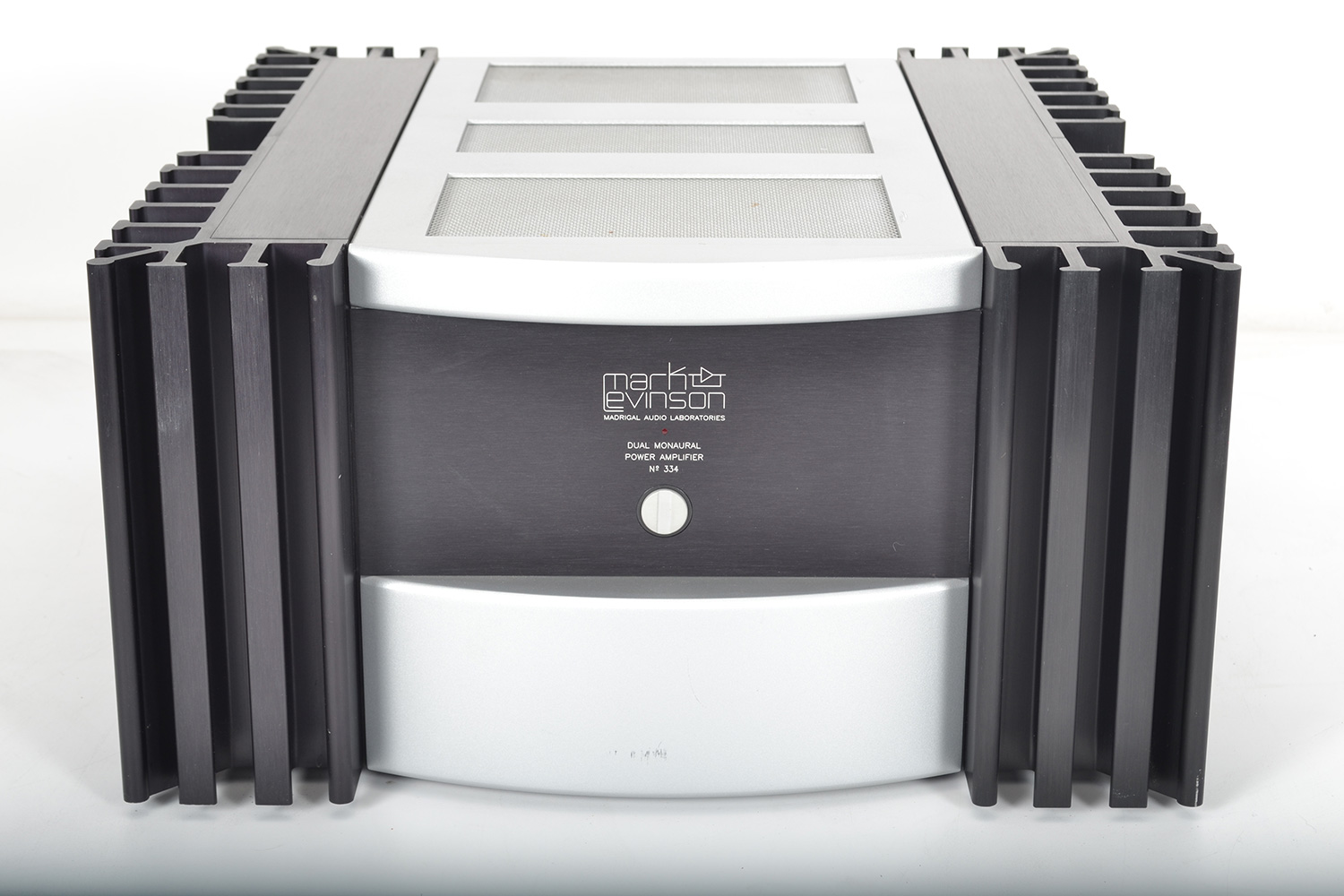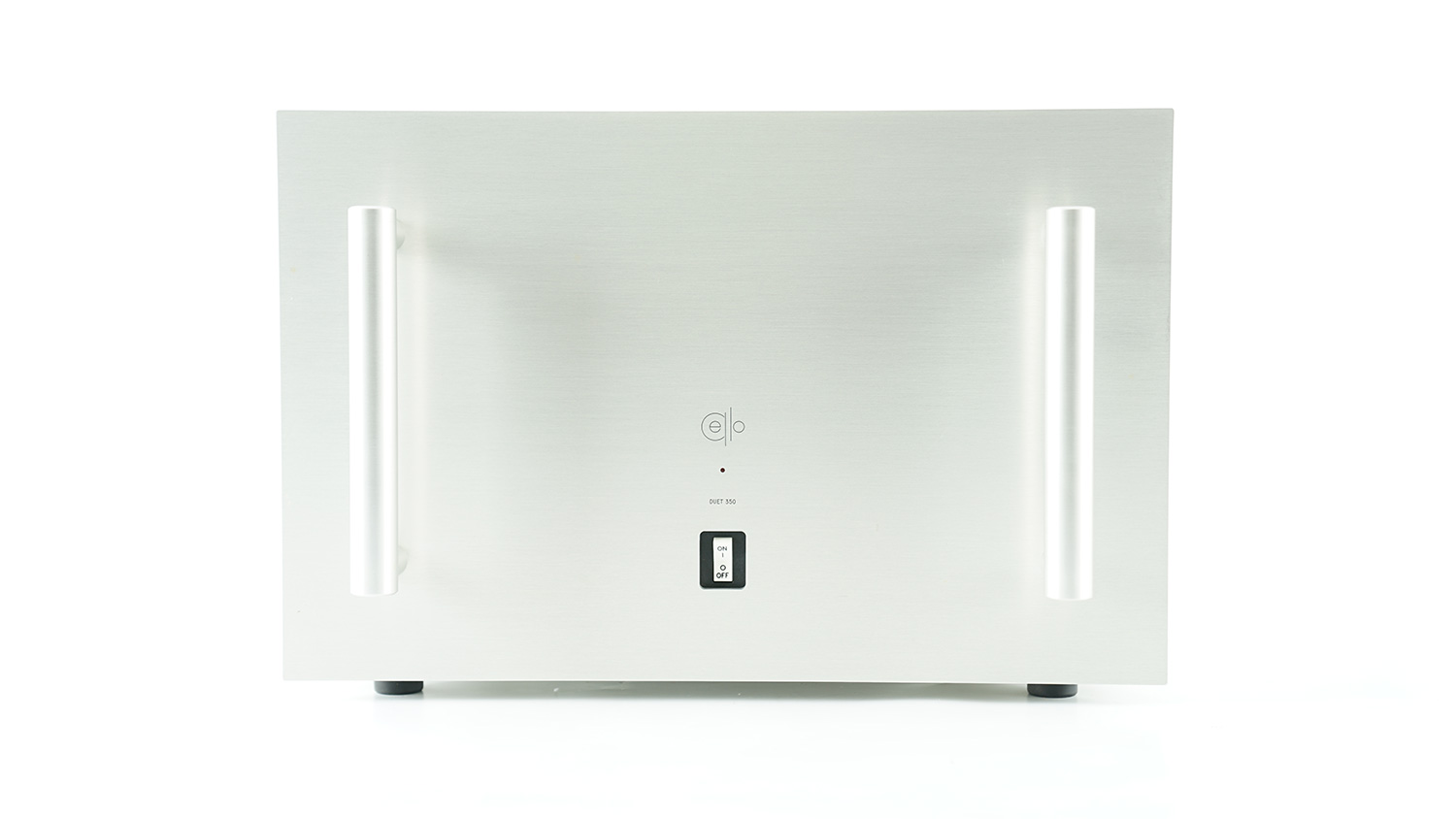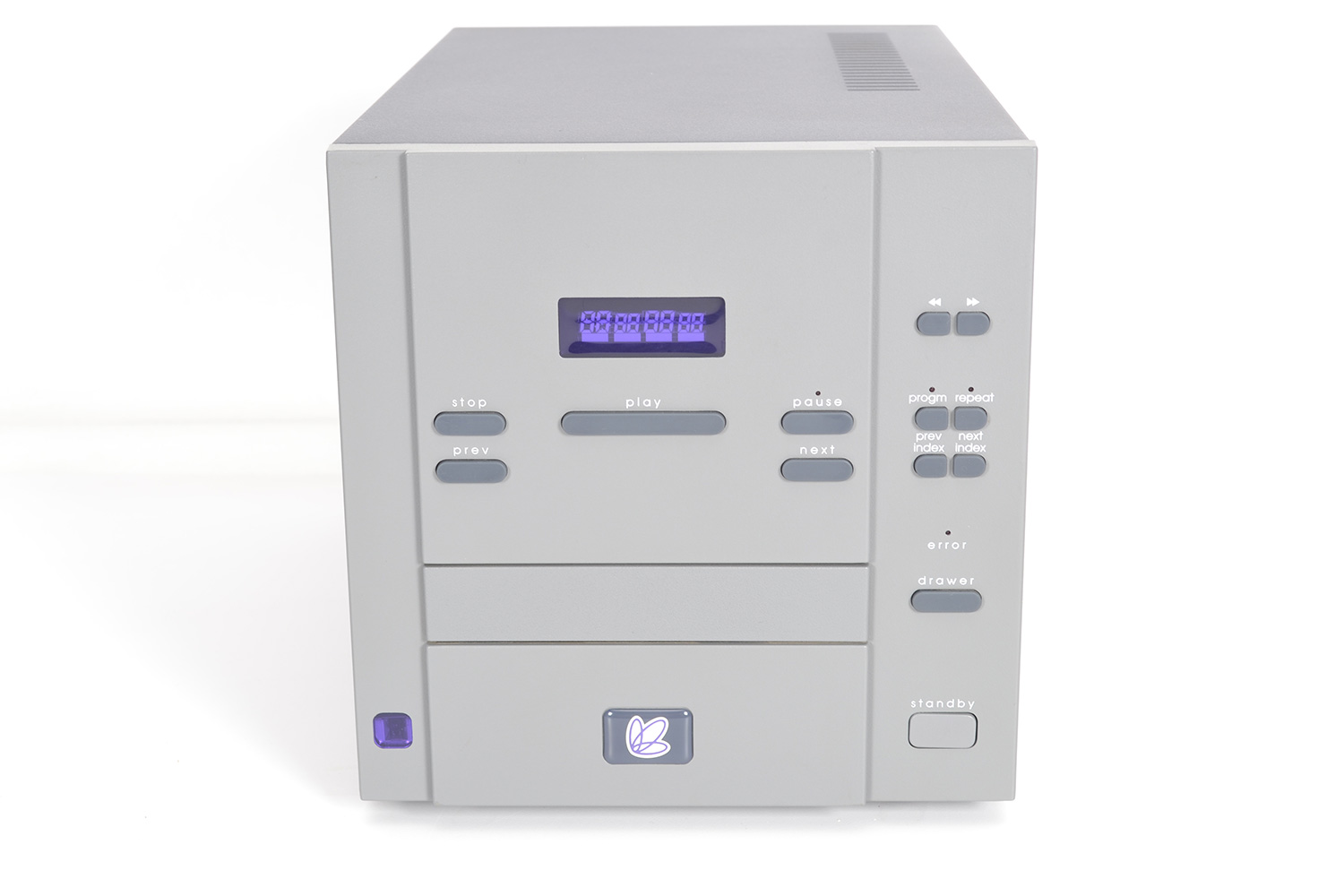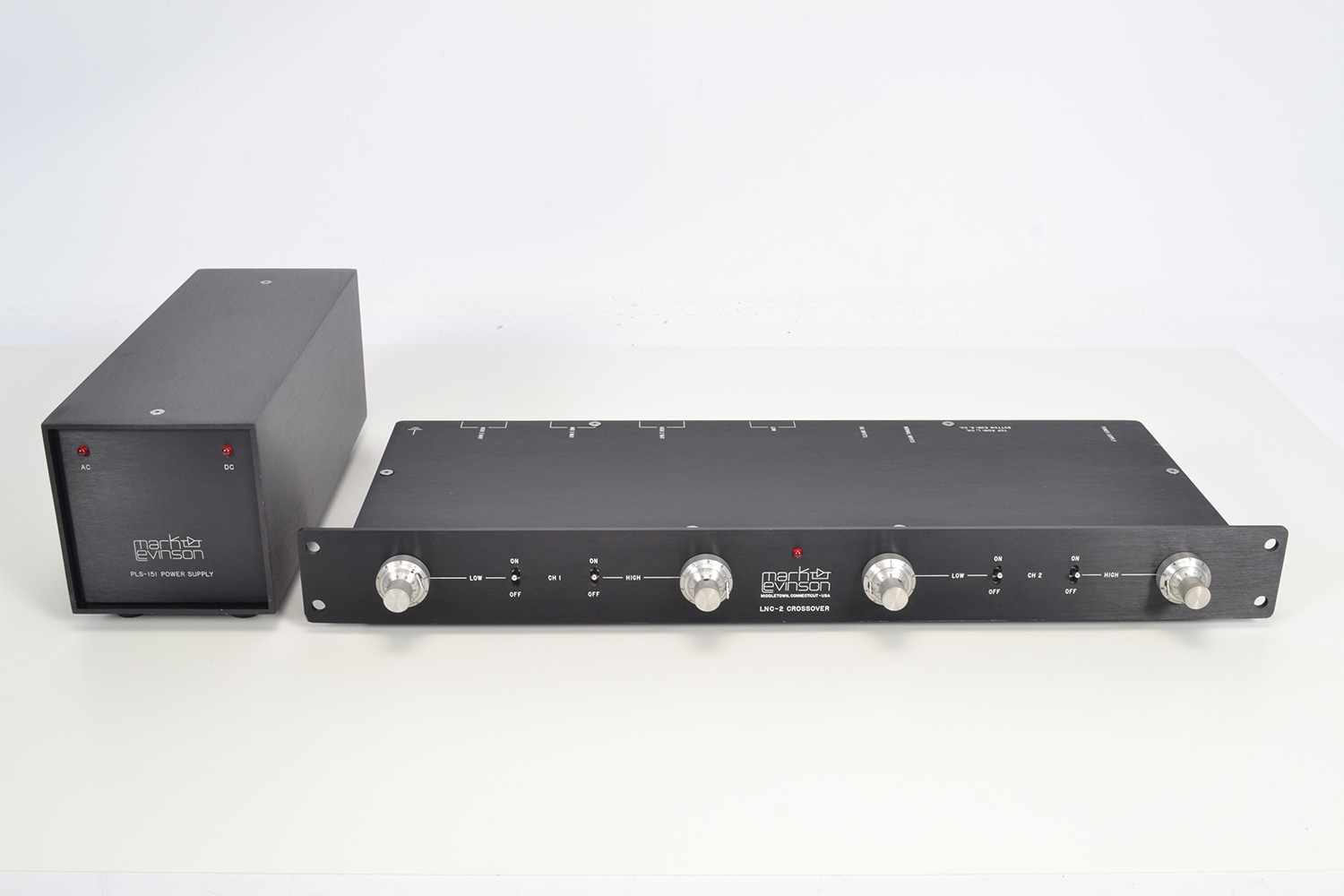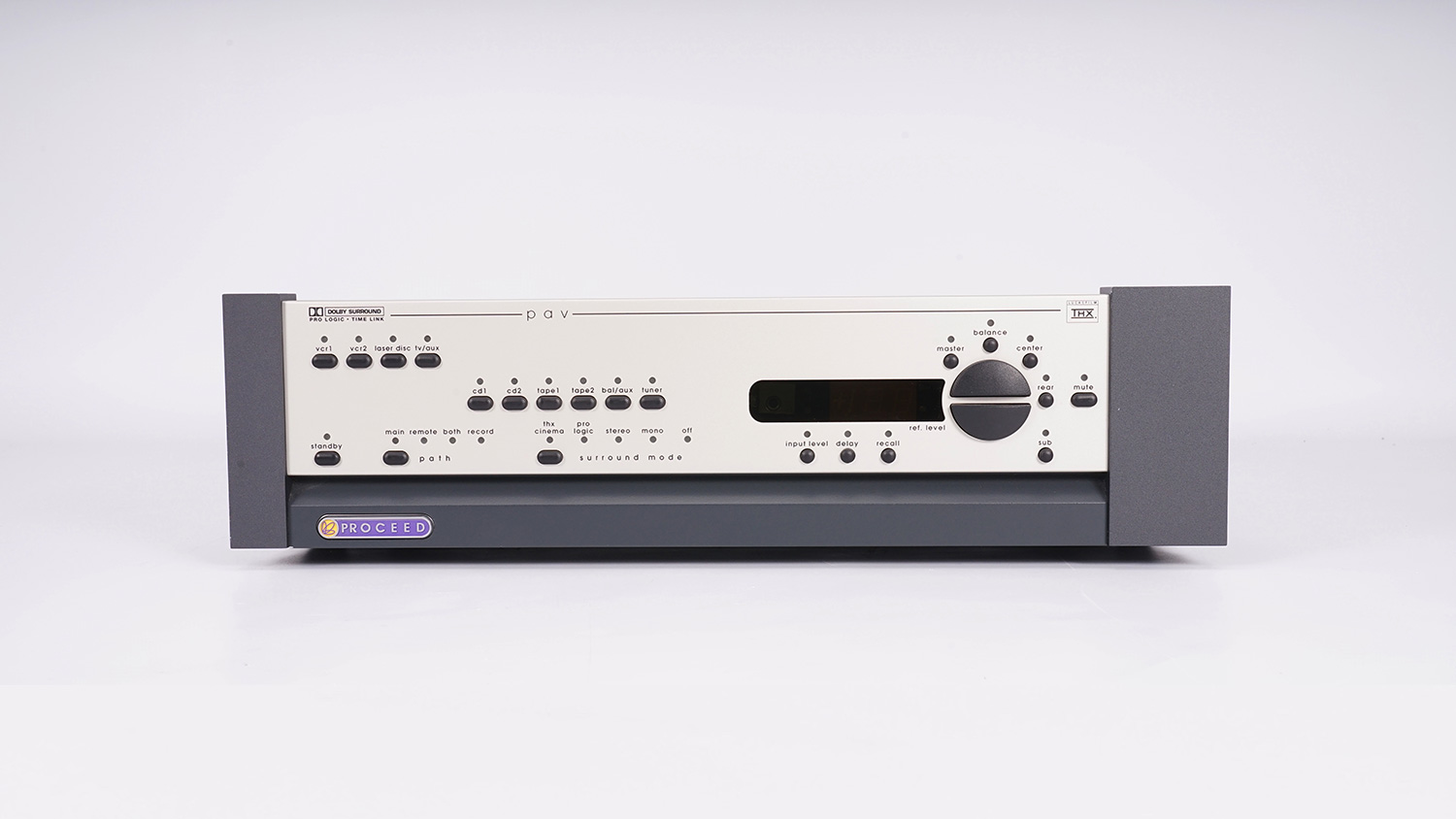
Levinson is one of the most dependable brand names when it comes to high-end audio systems. For years the brand has been recognized by audiophiles throughout the world as equipment that delivers clear and consistent quality in music.
What are the specs for the Proceed PAV?
- Description:
- Full-function surround-sound audio/video preamplifier with Pro Logic, THX, and music modes.
- Frequency response and THD:
- not specified.
- S/N ratio (main outputs):
- greater than 80dB at 0dB output.
- Gain:
- 14dB (nominal).
- Gain range:
- -60dB to +14dB.
- Gain resolution:
- 0.5dB except at lowest levels.
- Input overload:
- greater than 2V RMS (0dB output).
- Input impedance:
- 100k ohms (single-ended).
- Output impedance:
- ±20 ohms.
- Maximum output:
- 10V RMS (balanced).
- Audio inputs:
- 2 balanced, 8 single-ended.
- Audio outputs:
- 1 set stereo main (L&R), balanced; 2 set stereo remote (balanced and unbalanced); 6 single-ended main (L, C, R, Sub, LSur, RSur); 4 sets record out (2 sets each VCR and tape).
- Video inputs:
- 4 composite video, 4 S-video (Y/C).
- Video outputs:
- 4 composite video, 4 S-video (Y/C).
- Dimensions:
- 17.25"" W by 4.45"" H by 13.27"" D.
- Weight:
- 27 lbs (shipping).
What else to know about the Proceed PAV?
"I was initially surprised at how well the PAV performed as a stereo preamp. I shouldn't have been; a system with the Proceed Pre (a new, two-channel, preamp-only version of the PAV), a Proceed power amp, and two Magnepan MG 2.7 loudspeakers had been one of my favorite systems at the 1994 Stereophile High-End Hi-Fi Show in Miami. In its stereo-only, preamp-only mode, the PAV was hard to fault; it had an easy, relaxed sound, good definition, and no irritating qualities. But it couldn't quite match the Rowland Consummate I compared it with. Stacked up against the Rowland, the PAV's sound was less expansive, with a subtly grainier top end and a less extended deep bass. In compensation, the bass from the PAV was tighter; yet that same quality may have been responsible for the PAV's somewhat leaner, less palpably there sound—particularly on vocals. An audiophile friend who also heard the comparison in my listening-room reference system (Mark Levinson No.31 transport and No.35 processor, Krell KSA-300S power amp, and Energy Veritas v2.8 loudspeakers) commented that the ""magic"" was missing with the PAV, but was clearly there with the Rowland. I don't disagree with his judgment, but it may be a bit severe. Remember, the Proceed is essentially a $2000 preamp with a $2200 surround-sound processor built in. The Consummate is a $6000 preamplifier. I'm certain that even Madrigal would argue that their own, more-expensive, Levinson-brand preamps would outperform the PAV in its stereo mode. What the PAV is, however, is a solid-performing preamp that will in no way embarrass the best high-end Home Theater systems in which it's likely to be used—with either music or films. Its stereo-surround music mode is effective, but should you choose to listen to your music in normal, unprocessed stereo, you'll get an easily Class B preamplifier tied to a Class A Pro Logic/THX processor. Conclusion It would be less than up-front of me to fail to bring up the subject of discrete multi-channel sound—some form of which may well find its way into the consumer market in the next two years. Whichever system wins out (Dolby has a system which, as I write this, appears likely to be the first to market), it will use some form of data reduction to place 5.1 non-matrixed channels (the 0.1 is the limited-bandwidth subwoofer channel) onto a laserdisc. Separation between the channels will be dramatically improved over that of Pro Logic, the rear-channel decorrelation and delay won't be required, and all channels (except the subwoofer channel) will be full-range. Existing processors, including the PAV, won't be compatible with this and will have to be redesigned (footnote 2). Should you wait? Not necessarily. Pro Logic will be around for a long time. It'll take years to remaster existing titles for the new system, and many titles will never be remastered. Only you can decide if an investment now in an expensive Pro Logic decoder will be justified. If you must be the first kid on the block with the new toy, then you just might want to wait until the new discrete, multi-channel system is available. But if you want state-of-the-art Pro Logic and THX processing today, and don't want to settle for a compromise until there's sufficient new-format software to justify purchasing the hardware to play it on, the PAV is waiting. It's expensive, but as part of a first-class, no-compromise Home Theater, it's worth every penny." - Stereophile, NortonBrief History of Mark Levinson
Long mapped-to Binghamton New York – the current headquarters and manufacturing center for Mark Levinson Labs – not many people know the brand was originally launched outside of the Nation’s Capital in Silver Spring Maryland, in 1949. In 1956, the brand built their original facility in New York, according to the official brand website.
Other Mark Levinson Products We Often Buy
StereoBuyers has purchased tens of thousands worth Mark Levinson brand equipment since 2014, with individual buys ranging from $100 to well over $50,000. If you are moving, ready to upgrade, or have Mark Levinson equipment you do not or will not be using, why not contact us today to find out if it is worth good money?
If you are interested in selling your used Mark Levinson equipment to us in the greater NYC area or Colorado, please click here to fill out a Free Quote Form and we will get back to you. If we agree on terms, we come to meet you where you want, and pay cash.
The following images show actual Mark Levinson equipment purchased by StereoBuyers.
